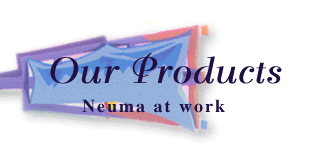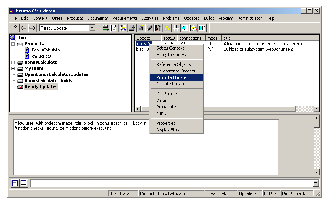|
CM+ Applications to Manage the Software Development
Lifecycle
|
 |
In a single integrated solution, CM+ combines configuration
management with product management and process control, covering all the phases
of your software development lifecycle. Learn more about:
- Requirements Management
- Document Management
- Project Management and Activity Tracking
- Product Management and Feature Tracking
- Problem Tracking
- Change Management
- Configuration Management
- Build and Release Tracking and Build Automation
- Process Modelling and Workflow Automation
Requirements Management
CM+ Requirements Management lets you enter, organize,
approve and report on all the requirements driving your software development
projects. Requirements in CM+ are configuration and change managed across
parallel release streams. Just like source code, you change your requirements
only through approved change packages, which include any changes to the
structure and organization of the requirements. You then create baselines
against which your designers can begin development. The complete revision
history of each requirement can be traced through a two dimensional history
tree.
Requirements are linked to each other in two ways. The first
is a hierarchical organization established at the revision level, meaning that
parent, child relationships are maintained on versions of requirements and can
change between versions. The second is through arbitrary "related" links, which
persist across all requirement revisions.
As CM+ is a truly integrated SCM solution, requirements may
be linked directly to source code change-packages, providing complete
traceability between product releases and the requirements that were
implemented in them.
Document Management
Need a place to store project documents without cluttering
your source code tree? CM+ includes a document management application that lets
you organize, track and control your documents separately from your code base.
Assign and track the authoring and review cycles for each of your project's key
documents, applying a consistent numbering convention and template. Store your
documents in a logical structure giving all your team members ready access to
the information they need.
Behind the scenes CM+ is source managing your documents.
Every revision is tracked and can be rolled back if necessary, and delta
compression is applied to keep your overall archive space to a minimum.
Project Management and Activity Tracking
CM+ Activity Tracking lets you define a Work Breakdown
Structure (WBS) for your project and link those activities directly to your
software changes. Like everything else in CM+, Activities are tied to products
and streams so you can prepare high-level plans for future release streams as
well as look back at the entire history of your product development.
Against each WBS element you can track planned, forecast and
actual efforts and delivery dates, with status updated automatically as work is
completed. Combine this with built in Gantt chart, status graph and tabular
reporting and you have all the project information you need without having to
maintain data in a separate scheduling tool.
Product Management and Feature Tracking
More than just a project tracking application, Activities
also track the incremental evolution of your software design. With iterative
lifecycle models, Activities can be inserted for each new feature, use-case or
design element as it gets added to the plan. The activities then appear
automatically in a designer's to-do list. Since these activities are
subsequently linked to change packages and product releases, you'll know
instantly when they have been implemented and can generate a custom design
document for each release.
Problem Tracking
CM+ Problem Tracking lets your QA team quickly and
accurately report problems in the common SCM system. Your Change Control Board
(CCB) can then review and prioritize each problem, assigning it to a release
stream and a designer. It shows up automatically in the designer's to-do list
to be fixed. Because your QA team is working in a truly integrated SCM system,
they have full access to the change history of the build being tested. They can
review every requirement, activity and change-package that went into the build,
and track down the designers who worked on it.
CM+ provides a full suite of problem tracking reports
including arrival and fix rate graphs, monthly reports and risk reports. A
custom report building function is also available. CM+ Enterprise also provides
a configurable process flow for problems, with automatic status promotions tied
to the change management process.
Integral Change Management

|
|
|
CM+ Integral Change management lets you focus on your changes, while CM+
handles the tedious version control and configuration management tasks
automatically. Upstream artifacts such as requirements, activities and problems
first undergo review and approval processes before being assigned and targeted
to a release stream. Then, a designer links the driving artifact to a change
package called an update and checks out source code against the update. All
code changes are packaged into updates providing a context and description for
each change. Each update is code-reviewed, unit-tested, checked-in, and
approved as a single unit of change. No need for check-in comments, sandboxes
or labels: your designers can focus on their changes. Changes to the product
structure (new files, new or changed directories) are handled in updates as
well, so your designers are free to add and remove files, refactor or
componentize, knowing that their changes will only become visible when
approved.
Do away with cowboy coding, contentious files and sandboxes. Designers
check-out files only long enough to change them. They can check in as many
changes as they like without fear of "breaking the build". Only when the
designer marks the changes ready, are they picked up for a build. Work teams
can collaborate by resticting their context (view) to the last stable build
plus changes from their own team. Truly contentious files can be checked out in
parallel or better yet, in queued mode, to minimize reconcile and merge
steps.
Automatic Configuration Management
Most version control systems require you to model your promotion stages with
a set of branches, sometimes called a branch or stream hierarchy. To promote
changes, you must merge them into the next branch. Then to define new
configurations, you must label the file revisions or create a snapshot. In CM+,
to move file changes along your promotion model, you simply review the change
and promote the update. All the traceability information to support the review
is available in a single mouse click: problems fixed, features implemented,
pre-requisite updates, code delta, review notes etc.
After reviewing and promoting updates, simply tell CM+ to align your source
tree and a new configuration is created automatically - no labelling required.
CM+ will also look at your product stream history (road-map) and determine if
any bug fixes or other changes should carry forward into your stream.
Powerful Build and Release Management
CM+ also tracks software configurations using build records. A build record
captures a baseline plus any number of linked updates, reproducing the exact
configuration without resorting to labelling, and without creating any new
branches. Plus a build record captures other attributes such as deployment and
test instructions, target data and status. Builds follow their own process
flow, so you can manage their progression through your packaging, deployment,
test and release process.
With CM+ Build and Release Management you have complete traceability from
the build records back to the lifecycle artifacts that drove the build, so you
can query the build records interactively to determine problems fixed, features
implemented, requirements addressed etc. You can also look at structural
changes, code deltas and even the team members who worked on the build.
Automatically generate a Software Version Document so you can tell your
customers ahead of time what to expect in the build.
Process Modelling And Workflow Automation
CM+ supports both task-based and state-based process control. Use the
Activity Tracking application to define common tasks within your development
cycles then use state-based process control to enforce the workflow for each
development artifact (problems, activities, updates, builds, requirements). CM+
uses a built-in process engine and security model to give you complete control
over valid process transitions, permissions on each transition and pre and post
transition triggers.
Then automate your workflow through a combination of scripted application
layer steps and triggered events. Common use-cases such as "Fix Problem" and
"Implement Activity" are handled natively. Design your own automated use-cases
easily through the Process menu: add states and transitions, configure
transition rules and triggers, and add new menu items.
|